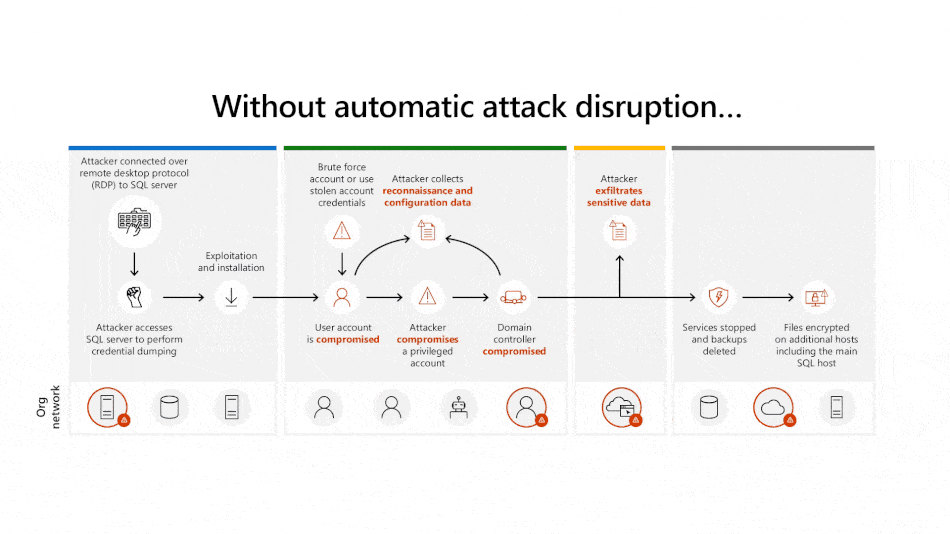Notizie per Categorie
Articoli Recenti
- Explore practical best practices to secure your data with Microsoft Purview 25 Aprile 2025
- New whitepaper outlines the taxonomy of failure modes in AI agents 24 Aprile 2025
- Understanding the threat landscape for Kubernetes and containerized assets 23 Aprile 2025
- [Launched] Generally Available: Instance Mix for Virtual Machine Scale Sets 22 Aprile 2025
- Microsoft’s AI vision shines at MWC 2025 in Barcelona 22 Aprile 2025
- [Launched] Generally Available: Announcing the Next generation Azure Data Box Devices 22 Aprile 2025
- [Launched] Generally Available: Cross-Region Data Transfer Capability in Azure Data Box Devices 21 Aprile 2025
- [Launched] Generally Available: Azure Ultra Disk Storage is now available in Spain Central 21 Aprile 2025
- [Launched] Generally Available: Azure Firewall resource specific log tables get Azure Monitor Basic plan support 21 Aprile 2025
- Hannover Messe 2025: Microsoft puts industrial AI to work 21 Aprile 2025
Microsoft Defender for Endpoint now stops human-operated attacks on its own
Defenders need every edge they can get in the fight against ransomware. Today, we’re pleased to announce that Microsoft Defender for Endpoint customers will now be able automatically to disrupt human-operated attacks like ransomware early in the kill chain without needing to deploy any other capabilities. Now, organizations only need to onboard their devices to Defender for Endpoint to start realizing the benefits of attack disruption, bringing this extended detection and response (XDR) AI-powered capability within reach of even more customers.
Automatic attack disruption uses signal across the Microsoft 365 Defender workloads (identities, endpoints, email, and software as a service [SaaS] apps) to disrupt advanced attacks with high confidence. Basically, if the beginning of a human-operated attack is detected on a single device, attack disruption will simultaneously stop the campaign on that device and inoculate all other devices in the organization. The adversary has nowhere to go.

Microsoft Defender for Endpoint
Discover and secure endpoint devices across your multiplatform enterprise.
Attack disruption achieves this outcome by containing compromised users across all devices to outmaneuver attackers before they have the chance to act maliciously, such as using accounts to move laterally, performing credential theft, data exfiltration, and encrypting remotely. This on-by-default capability will identify if the compromised user has any associated activity with any other endpoint and immediately cut off all inbound and outbound communication, essentially containing them. Even if a user has the highest permission level and would normally be outside a security control’s purview, the attacker will still be restricted from accessing any device in the organization. As a result of this decentralized protection, attack disruption has saved 91 percent of targeted devices from encryption attempts.1
Until now, detecting these campaigns early posed significant challenges for security teams since adversaries typically perform activities disguised as normal user behavior. And while other vendors may detect these attack techniques, only Microsoft 365 Defender can automatically disrupt them around the clock even when your security team might be offline. Backed by Microsoft’s breadth of signal and deep user behavioral analysis, security teams now possess a robust new tool to effortlessly stop sophisticated ransomware attackers at scale.

This capability has been quietly disrupting attacks for real organizations since 2022. For example, in August 2023, hackers compromised the devices of a medical research lab. With lives and millions of dollars in research at stake, the potential reward for hackers to encrypt the devices and demand a ransom was high. During the hands-on keyboard attack, hackers manually executed commands and used remote desktop protocol to connect to one of the organization’s SQL servers. From there, the hackers performed credential dumping—the first step in trying to access 55 other devices in the network. However, they were unaware that the moment they connected to the SQL server, that would be the last step in their ransomware campaign. They were immediately shut out from accessing any of the lab’s devices. And the security analysts didn’t even have to lift a finger.
This research lab was just one of a handful of Microsoft customers involved in the preview of this industry-first capability. Since August 2023, more than 6,500 devices have been spared encryption from ransomware campaigns executed by hacker groups including BlackByte and Akira, and even red teams for hire.1
Automatic attack disruption levels the playing field
Ransomware is one of the most common human-operated attacks organizations face. In 2022, there were nearly 236.7 million ransomware attacks worldwide with the projected cost rising to USD265 billion annually by 2031.2 With increasing volume and impact of attacks like ransomware, security analysts need the sophisticated automation of previously manual responses that attack disruption offers to effectively scale their defenses.
To help defenders in this asymmetrical battlefield, in November 2022 Microsoft 365 Defender introduced automatic attack disruption: an industry-first capability that stops attacks at machine speed by using the correlation of cross-domain signal into one high-fidelity incident. Combined with automated incident and response capabilities, Microsoft 365 Defender is the only XDR platform that protects against ransomware attacks at the organizational and device levels.
In addition to ransomware, attack disruption covers the most prevalent, complex attacks including business email compromise and adversary-in-the-middle. These scenarios each involve a combination of attack vectors like endpoints, email, identities, and apps, posing a significant challenge for security teams to pinpoint where the attack is coming from. Most security vendors lack the high-fidelity signal to accurately identify if an attack is even happening, let alone can take disruption actions. Automatic attack disruption solves this problem by confidently detecting and disrupting at the attack source, giving defenders time to respond before the adversary can inflict damage.
Expand your coverage with more signal
As the security adage goes, it’s not a matter of if you’ll be breached, but a matter of when. Endpoint security requires a depth of defense through multiple protective layers and mechanisms such as patching vulnerabilities, using next-generation antivirus to neutralize threats at the perimeter, harnessing auto investigation and response to remediate at the individual device level and automatic attack disruption at the organization level to further limit the spread of an attack.
Attack disruption’s effectiveness and coverage increases with every product that is integrated into Microsoft 365 Defender. While the majority of ransomware attacks happen on the endpoint, it’s important to deploy the entirety of the security stack across apps, identities, email, and collaboration to protect against prevalent scenarios like business email compromise, adversary-in-the-middle, and future scenarios. This enables organizations to benefit not only from disruption capabilities but all the rich features across the most critical security workloads.
Protect customers of all sizes with automatic attack disruption today
Every day, more and more organizations around the world are taking advantage of automatic attack disruption to successfully disrupt human-operated attacks. The new contain user disruption capabilities will help customers of all sizes stay automatically protected against ransomware attacks. For small and medium businesses (SMBs), who often lack access to sophisticated security solutions or expertise, this “on by default” capability helps them stay protected from the latest threats, while they focus on running their business.
These capabilities are now available in public preview in the following endpoint protection offerings:
- Microsoft Defender for Endpoint Plan 2 and associated bundles.
- Defender for Business standalone and associated bundles.
To ensure you have the latest agent deployed and your devices are onboarded to take advantage of this capability, read the documentation.
To learn more:
- Dive deep into how automatic attack disruption worked in protecting the cancer research lab and in fending off the Akira threat group in this article.
- Tune into the live Ninja show on October 12, 2023.
- Join us for the upcoming Ask me Anything session on October 24, 2023.
- Watch a demo of automatic attack disruption in action.
Small and medium business resources:
- Learn about automatic attack disruption in Defender for Business through our documentation.
- Learn more about SMB security solutions from our website.
Learn more
Learn more about Microsoft Defender for Endpoint.
To learn more about Microsoft Security solutions, visit our website. Bookmark the Security blog to keep up with our expert coverage on security matters. Also, follow us on LinkedIn (Microsoft Security) and X, formerly known as Twitter, (@MSFTSecurity) for the latest news and updates on cybersecurity.
1Microsoft internal data.
2100+ Ransomware Attack Statistics 2023, Astra. August 4, 2023.
The post Microsoft Defender for Endpoint now stops human-operated attacks on its own appeared first on Microsoft Security Blog.
Source: Microsoft Security
